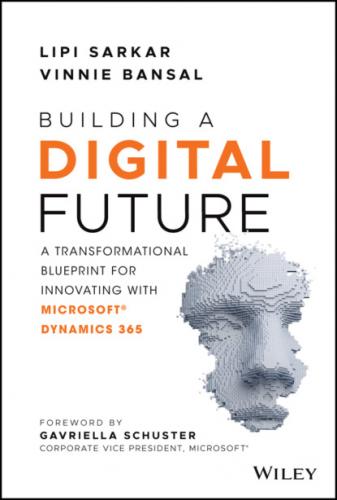Graeme Hackland, Group CIO, Williams Grand Prix Engineering
“Digital Transformation is a term often followed by ‘whatever that means for your organisation’ – there are some common objectives in almost all Digital Transformations: modernization, right-sized flexible IT services, and an easily understandable cost model. At my Organisation, enabling Collaboration and Mobility were the other pillars of our Digital Transformation, which has now morphed into our Digital Journey – constantly ensuring we remain at the forefront of digital technology that will give us a competitive advantage.”
A path to digital transformation requires a step-by-step approach with a transparent roadmap involving a wide variety of stakeholders, beyond silos and internal/external constraints. This roadmap considers that the ultimate targets will continue to move forward as the digital transition is de facto a continuous process, as well as digital change and creativity.
Digital transformation has already disrupted many industries and is threatening to disrupt others. The stakes are high, but the risks and opportunities are unevenly distributed. Some sectors are more affected than others. However, there are measures that organizations can take to increase their rewards and reduce their risks. This book defines the transformation of digital activities. It describes the path that organizations must take to avoid disruptions, take advantage of the transformation, and take full advantage of digital technologies and business models.
Continuous advancement in technology at a rapid pace and adoption of technology in businesses are often misinterpreted as Digital Transformation. This view overlooks the value of people buy-in, internal or external (employee or customer), and fails to engage vendors and partners.
Digital Transformation: Key Drivers
Today, customers are increasingly time-poor and in our busy day-to-day lives it is all about time efficiency. Customer experience is critical to remain in business and ahead of the competition. A customer expects personalized services and businesses to understand their needs, which can be provided based on a 360-degree view of customer insight through the latest technology.
COVID-19 has forced organizations to adopt technology, rapidly transforming their processes and attracting customers through new channels that do not compromise customer experience. This period has witnessed a huge shift in everyone's work culture. The mindset of senior leadership has had to adapt rapidly, compressing 10 years of change into 10 weeks. Let us look at some quotes from various businesses and their key drivers of digital transformation.
James Staten, VP Principal Analyst at Forrester Research and previously chief strategist and GM of Microsoft Azure
“You have to be prepared to be disrupted. CIOs can partner with marketing to help reposition IT as a digital transformation engine. You shouldn't be thinking about what applications you can migrate to the cloud. That isn't the path to lower costs and greater flexibility. Instead, you should be thinking about how your company can best leverage cloud platforms to enable new capabilities. Then create those new capabilities as enhancements to your existing applications. You must think differently as you approach cloud development. There's far more power in application design and configuration once you free yourself from assumed reliance on the infrastructure. The result is new degrees of freedom for developers – if you embrace the new model.”
Phil Scully, Group CIO, Costa Coffee
“It is highly likely that 2020 has pushed Digital Transformation all the way up the company agenda, and is now maybe even critical to business survival. Transformation needs to move beyond a website, mobile app, or technology to all areas and processes of an Enterprise, now delivering against this revised agenda at pace. Understanding these key drivers and setting principles from the outset for any program provides the best chance of transformational success and the step changes in process required. Technology change must move as an enabler in parallel to people and process for Digital Transformation to ultimately achieve a ‘digital mindset’ cultural change.”
All the digital conferences, keynotes, and articles that discuss the digital transformation with the right strategic partners and the critical drivers for the change have one common theme at the heart of their approach, which revolves around the customer. Digital transformation is all about customers, so let's talk about a few key drivers that are interconnected, as suggested by Nigel Fenwick (see Figure 1.1). You need to innovate and transform business models, transform experiences, transform the tech ecosystems, and transform operations.
FIGURE 1.1 Digital Transformation into Four Areas of Customer Focus
Source: Used with permission. Nigel Fenwick, VP, Principal Analyst, Forrester (2020) Accelerate Digital Transformation with the Right Strategic Partner (forrester.com).
Rising Customer Expectations
Of all customers, 73% pointed out customer experience as an important factor in their purchasing decisions. Yet only 49% of US consumers say companies provide good customer experience today.1
A seamless omnichannel experience is critical for customers as ordinary people interact with two to three devices in a day, and the customer loses interest if they don't have a similar experience of customer journey across all channels and devices.
Businesses are serving customers who live in the social age of Uber, Netflix, Apple, and Amazon, which are the epitome of customer experience, and the customer expects a similar experience from other businesses regardless of their sectors (e.g., banking, hospitality, leisure, travel).
This is about looking at the fact that “digital monsters” are transforming the markets around us and using the technological power to raise customer expectations to a new level. It means that digital transformation must be a very high priority and customer centricity should be at the heart for older firms to avoid becoming a “digital victim.” In Figure 1.1, this is referenced as transforming digital experiences of the customer and deliver easy, effective, and emotional customer experiences.
Speed Is More Important Than Ever
This is all about timing as speed is the most significant driver in digital transformation. The attention span of a customer is depleted in a few seconds, amidst enormous competition from lean, no baggage start-ups and tech giants alike. It is no longer the case that the big is overcoming the small,
